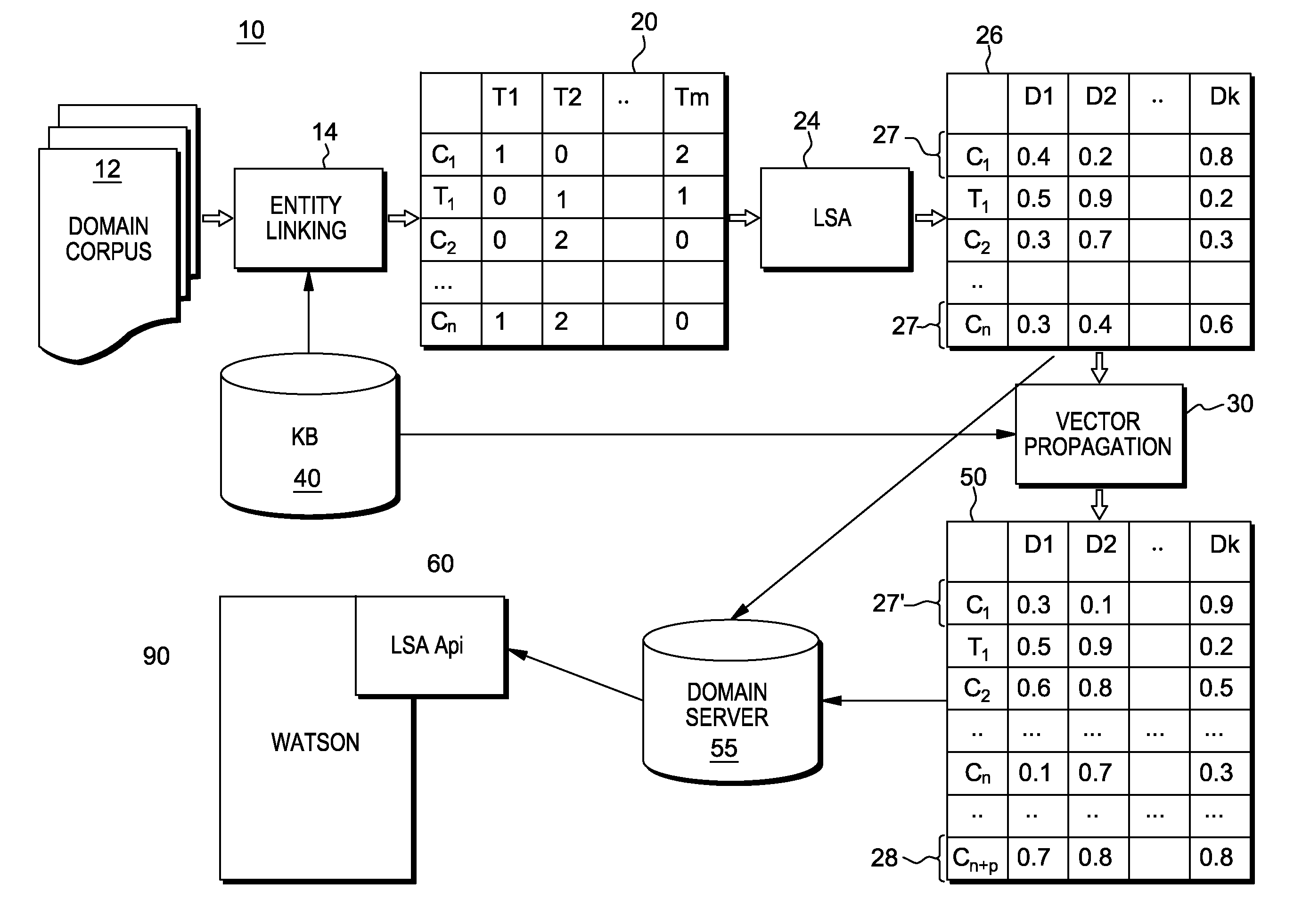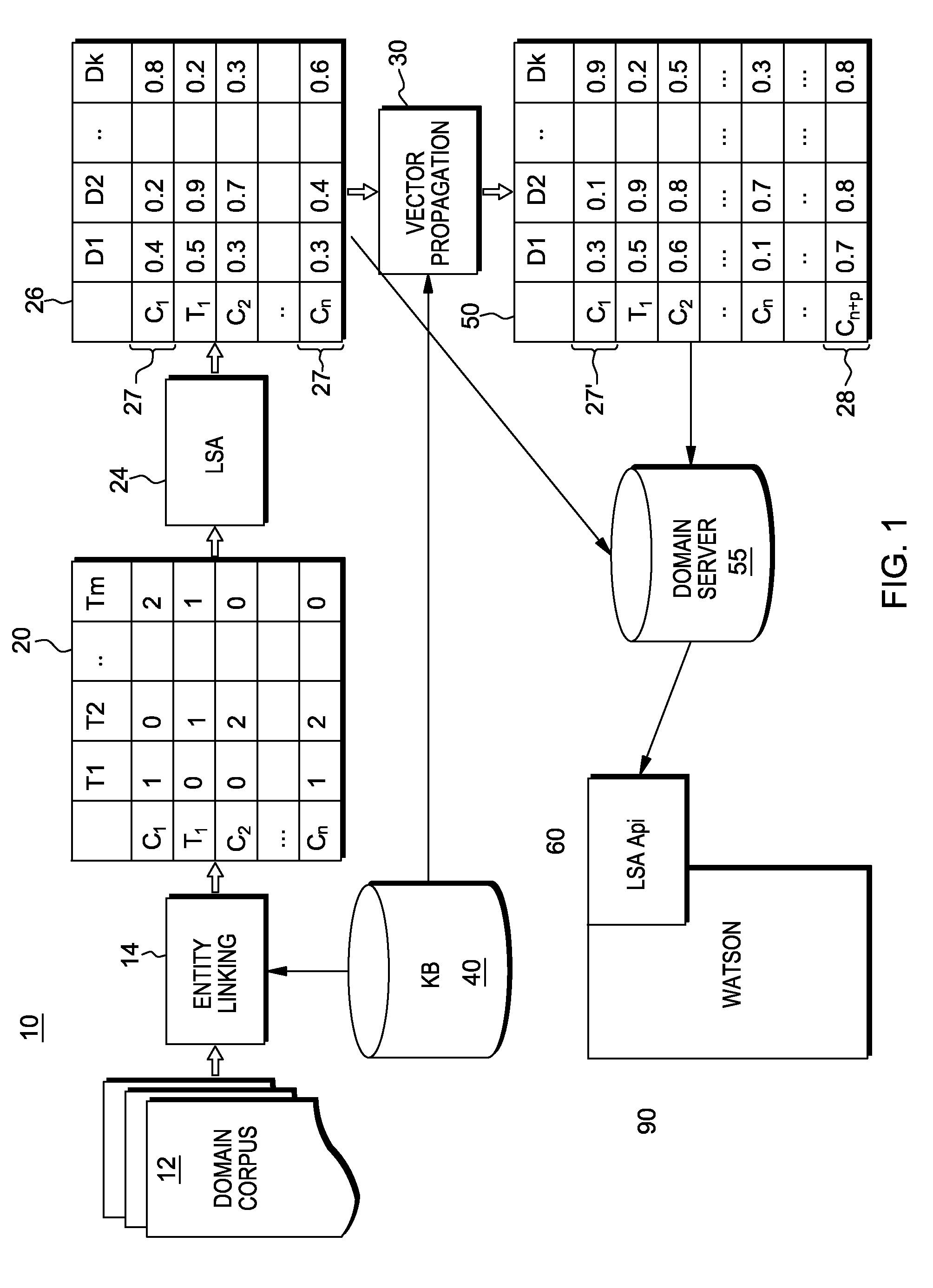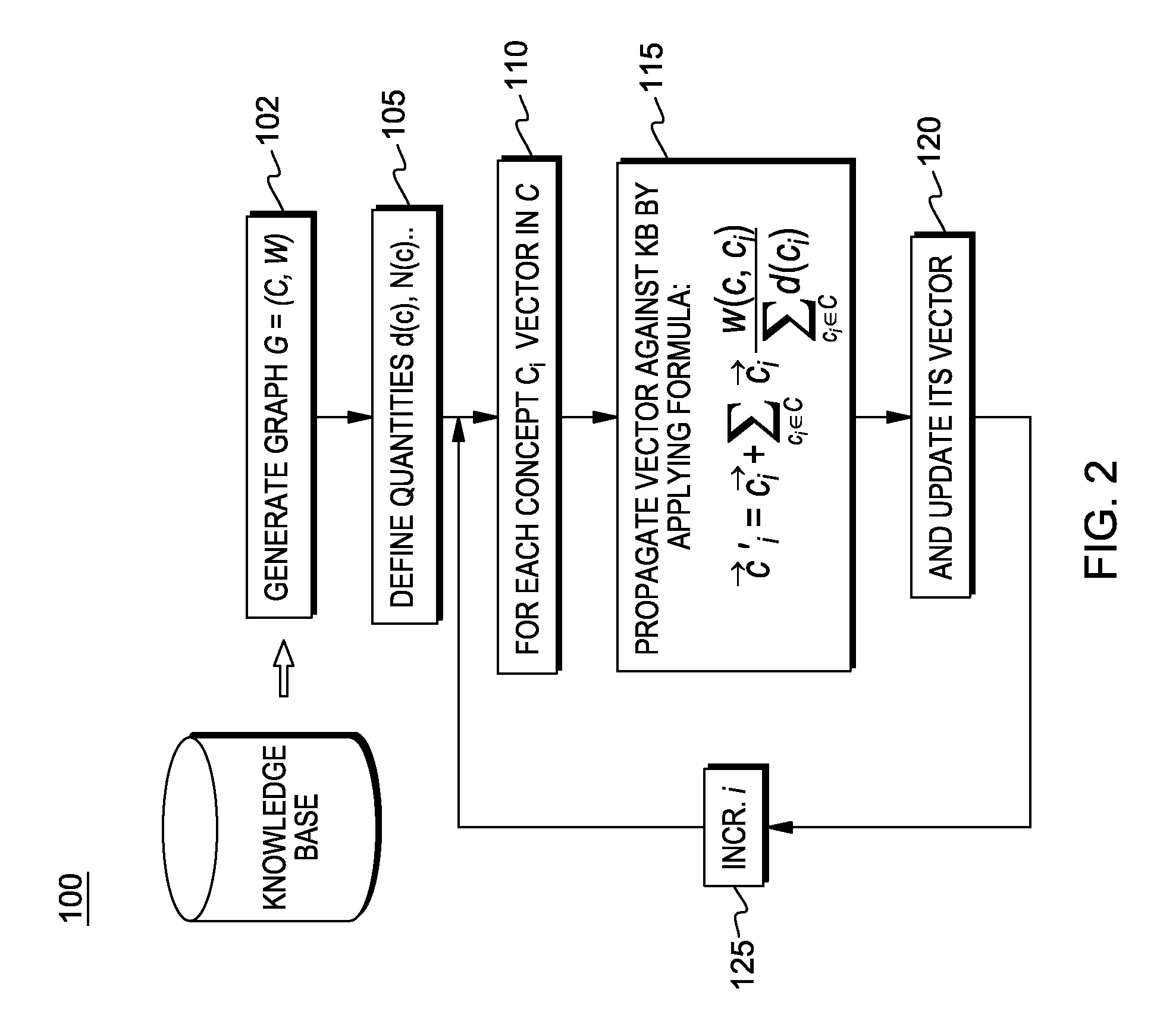Latent semantic analysis for application in a question answer system
a question answer system and semantic analysis technology, applied in the field of natural language processing, can solve the problems of difficult word sense disambiguation, both solutions are viable, and difficult to obtain similarity measures, and achieve the effect of improving the obtaining similarity measures
- Summary
- Abstract
- Description
- Claims
- Application Information
AI Technical Summary
Benefits of technology
Problems solved by technology
Method used
Image
Examples
Embodiment Construction
[0017]Latent semantic analysis (LSA) while being a technique known in the art to analyze relationships between a set of documents and the terms they contain by producing concepts, LSA is the dominant paradigm for measuring contextual similarity between terms in a corpus. However, LSA techniques do not take into account information from a knowledge base.
[0018]Using techniques of the present disclosure, information from a knowledge base(s) in combination with LSA, ultimately provides an improved similarity measure. In the techniques disclosed, each concept is represented in the knowledge base as a node of a graph whose edges between nodes represents a relation between concepts weighted by the number of semantic relations determined from a knowledge base, for example, UMLS. Then using the network generated so far, LSA vector associated to concepts is propagated to their neighbors, providing an improved similarity measure to be used in scoring answers, e.g., in an question answering alg...
PUM
 Login to View More
Login to View More Abstract
Description
Claims
Application Information
 Login to View More
Login to View More - R&D
- Intellectual Property
- Life Sciences
- Materials
- Tech Scout
- Unparalleled Data Quality
- Higher Quality Content
- 60% Fewer Hallucinations
Browse by: Latest US Patents, China's latest patents, Technical Efficacy Thesaurus, Application Domain, Technology Topic, Popular Technical Reports.
© 2025 PatSnap. All rights reserved.Legal|Privacy policy|Modern Slavery Act Transparency Statement|Sitemap|About US| Contact US: help@patsnap.com



